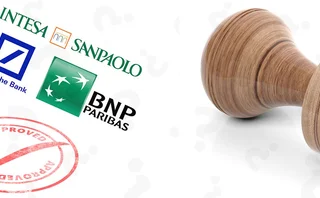
IASB relaxes stance on 'macro-hedging'
The International Accounting Standards Board (IASB) today relaxed its stance on ‘macro-hedging’ with its latest proposal to improve derivatives accounting.
The proposal requires that the company split the macro portfolio into time periods based on expected re-pricing dates and designate assets or liabilities against them as hedged items. All the assets from which the hedged amount is drawn must be items whose fair value changes in response to the risk being hedged and that could have qualified for fair-value hedging under IAS 39 if hedged individually.
The IASB said the need for accounting guidance was driven by the increasingly prevalent use of financial instruments for both risk management and other operating purposes. The release of the exposure draft is part of a continuing process to ease the implementation of IAS 39, said the IASB.
“A standard on financial instruments is an essential element of any complete set of accounting standards,” commented David Tweedie, IASB chairman. “Implementing IAS 39 certainly poses challenges, but this reflects the fact that derivatives today are complex instruments, and IAS 39 bridges the world of traditional cost accounting and a model that relies more on market values.”
The IASB held a number of roundtable discussions in March with representatives of financial institutions to find a way to accommodate hedge accounting. “While the discussions did not produce complete agreement on the measurement of hedge ineffectiveness and deposit liabilities, the IASB’s approach set out in the exposure draft would mark an important advance by permitting macro hedging,” said the IASB.
All comments on the exposure draft must be with the IASB by November 14.
Only users who have a paid subscription or are part of a corporate subscription are able to print or copy content.
To access these options, along with all other subscription benefits, please contact info@risk.net or view our subscription options here: http://subscriptions.risk.net/subscribe
You are currently unable to print this content. Please contact info@risk.net to find out more.
You are currently unable to copy this content. Please contact info@risk.net to find out more.
Copyright Infopro Digital Limited. All rights reserved.
You may share this content using our article tools. Printing this content is for the sole use of the Authorised User (named subscriber), as outlined in our terms and conditions - https://www.infopro-insight.com/terms-conditions/insight-subscriptions/
If you would like to purchase additional rights please email info@risk.net
Copyright Infopro Digital Limited. All rights reserved.
You may share this content using our article tools. Copying this content is for the sole use of the Authorised User (named subscriber), as outlined in our terms and conditions - https://www.infopro-insight.com/terms-conditions/insight-subscriptions/
If you would like to purchase additional rights please email info@risk.net
More on Regulation
Prop shops recoil from EU’s ‘ill-fitting’ capital regime
Large proprietary trading firms complain they are subject to hand-me-down rules originally designed for banks
Revealed: the three EU banks applying for IMA approval
BNP Paribas, Deutsche Bank and Intesa Sanpaolo ask ECB to use internal models for FRTB
FCA presses UK non-banks to put their affairs in order
Greater scrutiny of wind-down plans by regulator could alter capital and liquidity requirements
Industry calls for major rethink of Basel III rules
Isda AGM: Divergence on implementation suggests rules could be flawed, bankers say
Saudi Arabia poised to become clean netting jurisdiction
Isda AGM: Netting regulation awaiting final approvals from regulators
Japanese megabanks shun internal models as FRTB bites
Isda AGM: All in-scope banks opt for standardised approach to market risk; Nomura eyes IMA in 2025
CFTC chair backs easing of G-Sib surcharge in Basel endgame
Isda AGM: Fed’s proposed surcharge changes could hike client clearing cost by 80%
UK investment firms feeling the heat on prudential rules
Signs firms are falling behind FCA’s expectations on wind-down and liquidity risk management







